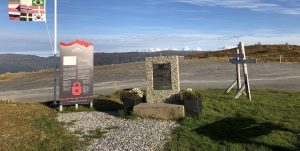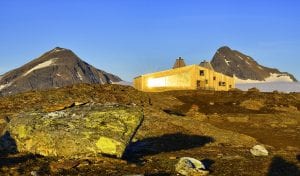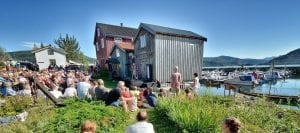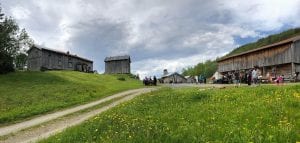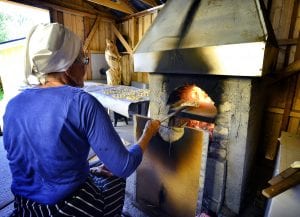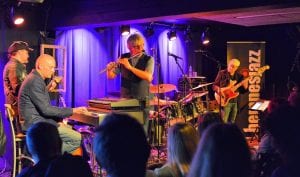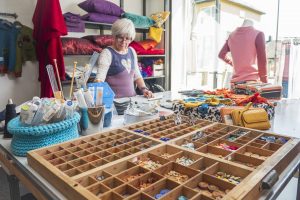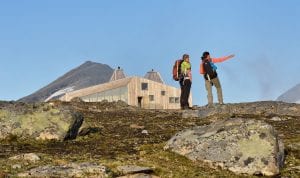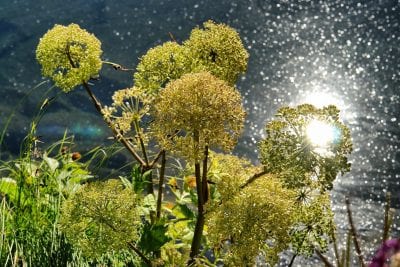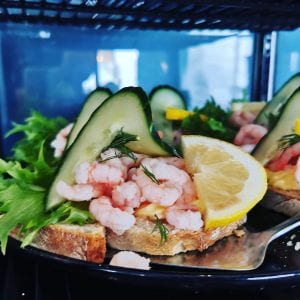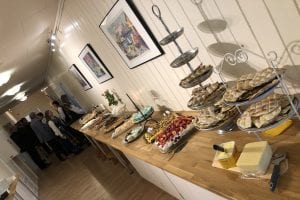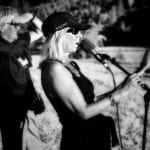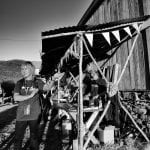When Klemet Person showed his wife Anna the rock shelter at Leirbotten that was to be their new residence, he would have been stunned to hear that a hundred years later all the villagers would gather to hear his story.
And a hundred years later, there were many moments of uncertainty as amateur actors prepared for the first performance of their historical play. Yes, it is summer, but this is Northern Norway – what if the weather forecast is wrong? What if no audience shows up? And what of the big investments…?
Certainly the ambition, courage and persistence of those who launched this project were impressive. They had scheduled four performances and had 1600 tickets ready. Now they held their breath. All in all, 2300 people came, and extra seats had to be made available!
A story takes form
Kjell Joar Petersen-Øverleir was the man who came up with the idea of presenting the story of Klemet the Sámi. He wanted to collect the stories of the mysterious Sámi mountain guide who chose to live a life in harmony with the mountain wilderness he was so fond of: Okstindane. The more Kjell Joar searched, the more amazing stories he discovered.
Klemet was said to have cured sick people, and by and large he was his own doctor as well. He even cut off his lower lip when it became cancerous! But it was also rumoured that Klemet had the power to make healthy people sick by casting spells on them – what the people of Northern Norway call ganne. Most of the stories about Klemet, however, highlighted the hard life he and his family lived, and the conflicts between the often-nomadic Sámi and villagers.
For generations the local people had heard the many stories about Klemet. Now Kjell Joar wanted to present a historical play dedicated to Klemet Person that made sense of it all.
Passionate villagers
For the performance, almost 200 villagers played a role, either on stage or through the production of the costumes, preparation of the outdoor arena and audience seating, making the music, doing the marketing, or preparing food for the many participants – and everything had to be coordinated precisely. It was a massive undertaking.
Ada Einmo Jürgensen, director of the Åarjelhsaemien Theatre got busy instructing the 40 adults and children who were to be the villagers on stage. She describes their commitment and persistence as overwhelming. In a sense the villagers were playing themselves – or rather their ancestors.
This was a key objective. The writers and the director believed it was essential that all of the villagers realize that this was their story. And the local amateur actors were to work in close collaboration with theatre professionals. This meant consulting with the villagers and seeking their ideas and input. The performance was to take place at Jamtjord in the valley of Leirskardalen, in Hemnes municipality. From the very beginning, even the landowners were involved.
Meetings were convened, ideas exchanged and proposals discussed and discussed again. There were many challenges to be solved and seemingly countless tasks to be done. The board of directors sought out people with relevant knowledge and special skills who could contribute, inspire others and ensure continuity.
“As an outsider, I am humbled by the trust and openness I have been met with. During this process, when I have requested and demanded, I’ve always been met with a smile and the words: “We’ll take care of this. We will fix that.” Admittedly there were also moments when someone asked, with or without a twinkle in their eye: “Are you sure about this?”” says the director, Ada Einmo Jürgensen.
Amateurs and professionals team up
The organisers and the director insisted on quality in every aspect of this historical play. This meant acknowledging the local community’s lack of experience and bringing in professional actors.
Åarjelhsaemien Theatre and Nordland Theatre were important partners and they contributed actively to the production that was taking form. On the basis of the many stories collected about Klemet, Stig Bang wrote an excellent script. As director Ada Einmo Jürgensen worked with the actors this script was interpreted and refined. The technical aspects of the performance were handled by the skilled staff of Nordland Theatre. Volunteers provided whatever was needed, showed up as required, listened and learned about the production’s many aspects. There are always challenges when an idea or a manuscript is to be turned into a performance.
A lively traditional market
Arranging an old-fashioned market in connection with Klemetspelet proved to be a huge success. A market is not only about bartering or selling goods. No, at a traditional market, the basket weaver, baker and brewer all show their craft, as do the boatbuilder and blacksmith. Likewise the carder and wool-spinner, the yarn- and cloth-dyer, the tanner and the furrier. From the bakehouse you can smell kamkake hot and fresh from the oven! And in Hemnes no market is complete without and exhibition of duodji, the traditional Sámi handicrafts, and likewise the availability of hearty Sámi food.
A lively market needs a good auction! Some are also convinced it also needs a fiddle and an accordion, an organ grinder and a wandering book seller. And surely booths that sell good food – such as quality sausages and smoked meat, goat cheese, honey from local beehives, the wonderful traditional bread called kamkake and, of course, beer from the local brewery.
A recipe for success
All too many people forget that the real meaning of amateur is someone who does something for the love of it! The mix of the amateurs’ passion and the professionals’ skill proved to be a recipe for success for Klemetspelet, at least these first performances. And it is this recipe that has been used over and over again.
Since 2013 the historical play has been performed every other year. The only postponement has been during the pandemic; but in 2022 the fifth series of performances are scheduled. Amateurs and professionals have been working hard to prepare the play, the celebrations and the market. Come join us!

